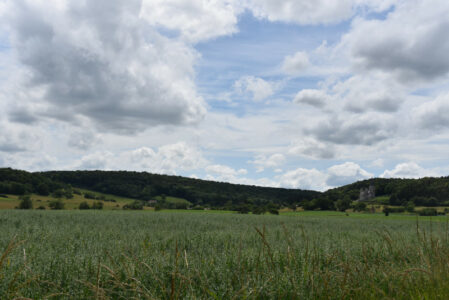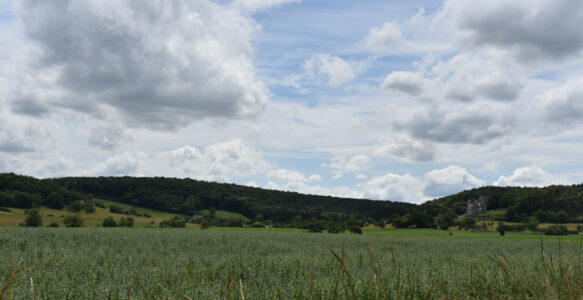Translated by deepl.com
The Normans ravaged and plundered Andenne in 883 and then the Count of Namur reduced it to ashes around 1050. The nuns of the monastery were then forced to flee and took refuge on their land at Mont-devant-Sassey, in the Clermontois region (near Verdun). They stayed there for more than half a century and built a new church from 1127 onwards, on the site of the original church.

The nuns also built their dwellings on the slopes of the church, which have retained the name of cloister. The shape of these living quarters determined the layout of the village as it is today, following the contour of the wooded buttress where the church dominates.
The main street of Mont-devant-Sassey is still called rue d’Andenne.
Mont-devant-Sassey has had to endure many hardships up to the present day. The Ladies of Andenne were able to keep the Seigniory of Mont until the Revolution, but several attempts were made to deprive them of their property. In the beginning, Mont and Sassey formed a single ban. It was not until 1307 (the date of their emancipation under the law of Beaumont) that they were separated. The archives tell us nothing in particular about this period, except for transactions, the application of the emancipation (royalties paid to the Lord, etc.), the management of the forests, etc. Mont was part of the Provostry of Dun, i.e. of the Clermontois, which constituted one of the most important parts of the County and then the Duchy of Bar, which was independent from France.
The name of the village was spelt in different ways: “Mons” in 1257 in the cartulary of the cathedral of Verdun, and in 1307 in a charter of Gobert d’Apremont: “De Montibus” and “Mont” from 1571. This name is explained by the local topography.
In the 17th century, the church of Mont-devant-Sassey had to be fortified to resist assaults during the Thirty Years’ War and the Fronde, but it suffered numerous attacks and successive damage. In 1637, the Marshal of Châtillon tried, in vain, to dislodge the brigands who had taken refuge in the church. This was the Thirty Years’ War, the most tormented period in the history of Lorraine.
In 1652, the Count of Grandpré and the French soldiers took refuge in the church. The partisans of the Prince de Condé and their Spanish allies planned to attack them, but they gave up because the axle of their cannon from Stenay broke. The following year, a French garrison was installed in the church, which thus became a sort of barracks. This time the Spaniards really attacked after a bombardment that caused considerable damage. Traces of the fighting in 1637 and 1653 are still visible on the north wall of the building.

